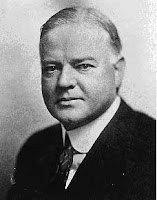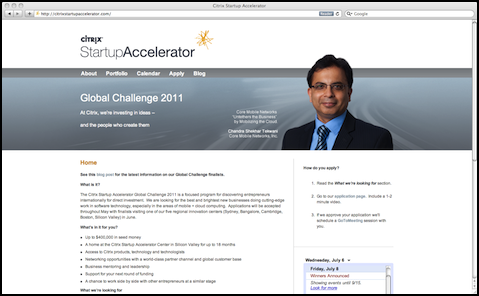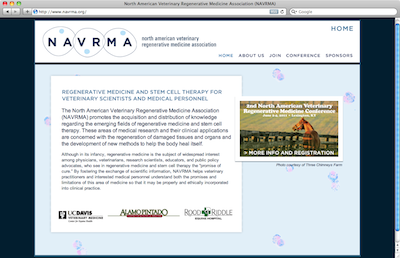When I started Bullet Consulting in 2010, I wrote pro bono work into my business plan. I believe it’s important to give back to the community, and I’ve long been intrigued by an idea of “tithing” your time, the way some people tithe at church. My goal was to spend 5% – 10% of my time working for nonprofits. But how do you actually do that? As I learned, it was not as easy as I had thought it would be. Continue reading “Writing Pro Bono into the Business Plan”
How to Maintain an Online Marketing Program – and Not Get Burned Out
 Recently I put together a quick proposal for a prospective client, who has been maintaining an online newsletter for 2 or 3 years now, and is feeling burned out by the burden of constantly producing new content for her newsletter. Here are some simple approaches I shared with her:
Recently I put together a quick proposal for a prospective client, who has been maintaining an online newsletter for 2 or 3 years now, and is feeling burned out by the burden of constantly producing new content for her newsletter. Here are some simple approaches I shared with her:
1. Develop an editorial calendar. This is one of the most under-appreciated – and valuable – strategies you can employ. An editorial calendar gives you a foundation so you’re not always scrambling to create or re-create marketing materials.
2. Create a schedule that you can live with. Find the right balance between continuously communicating to your clients and prospects – and feeling burned out. Continue reading “How to Maintain an Online Marketing Program – and Not Get Burned Out”
What I Learned in My First Year in Business
Starting a new business? Get ready for a good schooling.
You will make mistakes. But if you survive your first year in business, you learn from those mistakes. You have to. Everyone I talked to who started a business said the same thing: “I learned a lot in those first couple of years.”

Looking back on my first year as the founder of Bullet Marketing, I’d say that the single most important lesson I learned is the value of relationships. And by “relationships,” I mean real relationships. Face-to-face relationships. Meeting-for-coffee relationships. I-know-you-in-real-life relationships.
What I don’t mean are Twitterships. (Is that a word people use? I think I just made it up.)
The value of real relationships is not equal in all industries or for all businesses. If you’re Amazon or Priceline, for example, quantity is what matters. Relationships do still matter: loyalty and repeat business are key to profitability because of the high cost of customer acquisition. So you have to treat your customers nicely. But you don’t have to know them personally. In fact, if you’re Amazon you can’t possibly know all of your customers personally.
Consulting is different. When it comes to consultants (and marketing agencies), companies hire people they know. More precisely, people hire people they know. We hire people we know because they’re familiar, we’ve worked with them before, we know what to expect. Having to decide between two apparently equally qualified candidates for a contract, one of whom is a known quantity and the other unknown, people will always choose the familiar.
You’re probably not surprised by this revelation. It seems so obvious. But when I started my business, I didn’t pay enough attention to the importance of real relationships.
 Like a lot of other business owners (and employees), I was taken in by the hype surrounding social media and online marketing – inbound marketing, search engine optimization (SEO), social media marketing, and so on. I thought, “If I’m on Twitter, if I get a Facebook page for my business, if I optimize my website for search engines, I can sit back and wait for new customers to find me and knock on my door.”
Like a lot of other business owners (and employees), I was taken in by the hype surrounding social media and online marketing – inbound marketing, search engine optimization (SEO), social media marketing, and so on. I thought, “If I’m on Twitter, if I get a Facebook page for my business, if I optimize my website for search engines, I can sit back and wait for new customers to find me and knock on my door.”
Ha! Here’s the reality: Not a single prospect has contacted me because they discovered my website or were drawn in by a social media activity I’ve done.
(Here’s how another small business owner put it: “I didn’t see the needle move.”)
That doesn’t mean that a social media strategy isn’t important; but I would question its value for small businesses selling a service that depends largely on consulting or that is built primarily on the reputation of the owner. When you’re a small business with limited resources, you have to know where to invest your time and dollars, and you have to focus on those areas where real opportunity exists. Otherwise, you spend a lot of energy and money doing stuff that has negligible impact on customer base, revenue, or profit. While it’s true that large businesses have the same issue, they can more easily afford to dabble – test new channels, experiment with their marketing strategy – and spend relatively small amounts of time and money on areas that will turn out to be fruitless. A small business doesn’t have that luxury.
And especially for a small business that depends on real relationships, spending your time cultivating “twitterships” may turn you into a “social media expert” – standing in line at the unemployment office.
The Rise of Pro Bono: Why Serving Nonprofits is Good Business
 When you hear the term, “pro bono,” do you think of attorneys? It’s not surprising if you do. Short for “pro bono publico,” this Latin phrase means “for the public good” and, according to Wikipedia, is common in the legal profession. We think of attorneys who work for ACLU, for example, or who donate time defending death row inmates.
When you hear the term, “pro bono,” do you think of attorneys? It’s not surprising if you do. Short for “pro bono publico,” this Latin phrase means “for the public good” and, according to Wikipedia, is common in the legal profession. We think of attorneys who work for ACLU, for example, or who donate time defending death row inmates.
Interestingly, though, the pro bono work ethic has recently caught on in other industries – and this trend will only continue. Pro bono work is “increasingly seen in marketing, technology, and strategy consulting firms” (Wikipedia). In fact, more and more companies have made “giving back” a vital part of their business ethic and mission. Consider Salesforce.com, which created the Salesforce.com Foundation based on a principal of “integrated philanthropy”: “Donate 1% of salesforce.com’s resources to support organizations that are working to make our world a better place.”
Companies have discovered that doing pro bono work is beneficial not only to the nonprofits they serve, but to businesses themselves. Nonprofits benefit by access to talent and experience. Businesses benefit in other, less tangible ways:
1. Probably the most obvious way is through positive influence on reputation. Whether the company chooses to advertise its charitable work or let the work speak for itself, the company’s reputation is certainly burnished by the good deeds it does.
2. Another important intangible result is the impact on employee loyalty. According to a Booz Allen Hamilton study, the number one motivation for employees to stay with an organization is its mission. A mission that includes charitable work, backed by a genuine commitment from the organization, can be a powerful motivator with the potential to increase employee satisfaction and commitment.
3. Third, pro bono work is an excellent way to provide employees with career experience that might not be available otherwise. Supporting opportunities for employees to use their skills to benefit nonprofits gives these employees incentive to stay with their organization. At the same time, the new skills employees learn in the nonprofit environment (soft skills such as consensus building and leadership as well as job-specific skills) are brought back into the organization to benefit it as well.
On this last point I can speak from experience. In pro bono work I did for both StarVista and Streetside Stories, I was able to increase my skills in messaging, branding, naming, and identity – all of which are important and applicable to my marketing/consulting business. I also gained experience in leading meetings and presentations, invaluable skills that nearly all of us can use practice in. These examples illustrate how pro bono work has benefited my business – while providing a valuable service to the nonprofits I worked for.
Citrix Launches New Website Designed and Built by Bullet Consulting
April 20, 2011, Sacramento, Calif. – Bullet Consulting, a Sacramento-based consulting agency that helps clients achieve their business goals through strategic marketing and branding, today announced that it had completed design and coding for a new web property for Citrix Systems, Inc. The new site, www.citrixstartupaccelerator.com, is the online presence for Citrix Systems’ technology investment team and its Global Challenge 2011.
The website is the home of Citrix Startup Accelerator, which in 2011 was spun out of Citrix Labs, the innovation arm of Citrix Systems. Citrix Labs is charged with understanding and developing new technologies for the company; Citrix Startup Accelerator extends that focus on innovation by investing capital in new startups that have all the other ingredients to succeed. Global Challenge 2011 is a program for discovering entrepreneurs that Citrix can support and invest in.
The website was built in partnership with PAIR design, which, together with Bullet Consulting, designed the site and identity, including the Citrix Startup Accelerator logo. Example 7 built the backend code for the WordPress-based site. Bullet Consulting led the project and managed the relationship with the client.
“This project was completed under tight deadlines and budget and shows what can be accomplished by a virtual team that included four separate organizations (the client and three agencies) dispersed across North America,” said John Hyde, founder and principal of Bullet Consulting. “Collaboration and flexibility were key to successfully delivering this website on time and on budget,” he continued. “I especially recognize the great work of Jason Wister at PAIR design and Otis McCort at Example 7, who went above and beyond the call of duty to meet the client’s requests.”
In an email summarizing the project, John McIntyre, managing director of Citrix Startup Accelerator, wrote, “We had some tight time lines, and the cooperation and creativeness from all of you is what made this work.”

An Exceptional Article on Marketing
If you’re in marketing and you’re like me, you receive a daily onslaught of email proclaiming advice about everything from how to generate more leads with social media to how to write better emails (one can’t help but feel a little irony here). Most of it, of course, is not particularly insightful or new. If you didn’t happen to find time to read one particular message from one particular expert, no great loss. There will be more tomorrow.
Today was different. Today I read an exceptionally good article that I would highly recommend to anyone who thinks very deeply about marketing. At a time in which it’s difficult to find anyone saying anything truly interesting about marketing, this article is a standout.
 The article is about an experiment that the Washington Post did in January 2007, four years ago. I imagine that the experiment was discussed quite a bit back then, but it’s new to me. As part of the experiment, violinist Joshua Bell played a 1713 Stradivarius (worth about $3.5 million dollars) in a Washington DC subway station, incognito. The Post conducted the experiment, according to the article, to determine “the influence of context on people’s perceptions and priorities—and their ability to ‘recognize beauty.'” Needless to say, the response of passersby was tepid.
The article is about an experiment that the Washington Post did in January 2007, four years ago. I imagine that the experiment was discussed quite a bit back then, but it’s new to me. As part of the experiment, violinist Joshua Bell played a 1713 Stradivarius (worth about $3.5 million dollars) in a Washington DC subway station, incognito. The Post conducted the experiment, according to the article, to determine “the influence of context on people’s perceptions and priorities—and their ability to ‘recognize beauty.'” Needless to say, the response of passersby was tepid.
The article concludes the following:
- Value is never “timeless” or “transcendent.” It is a product of time, place, social context, and mental attitudes. Sharp fluctuations in stock and real estate values, premium commanded by name brands over generics, and mini-bar vs. supermarket prices are all examples of identical products having different values.
In the wrong context, at the wrong time, a product that, under other circumstances people would pay a premium for, becomes nearly worthless. In Boston two nights earlier, Bell played before an audience that gladly paid $100 a ticket. In the DC subway station, a similar performance earned a grand total of $32.17.
In the remainder of this article, which covers a lot of marketing theory in a very short amount of space, the authors demonstrate convincingly why product has no intrinsic value, and why context is so important.
I was reminded after reading it of one of the fundamental ideas in marketing: the four Ps (product, place, price, and promotion). Much is made these days of how the Internet and social media are changing the way marketing works. But the principles of marketing haven’t changed.
The Corporate Event – A Business With an Unusual Lifespan
Having just finished working on a corporate event project, I’ve been reflecting on the way in which running a large corporate event is like creating a new business. But it’s a business with an extraordinarily short lifespan. Months and months go into the planning, the event opens, a thousand customers show up, and five days later the business shuts its doors, the walls come down, everything is hauled away, and there’s little sign the business was ever there.
I’m not sure anything quite compares to it. Except maybe a circus.
Large user conferences and other annual corporate events – think MacWorld as an example – have a planning cycle that can last 12 months or longer. Indeed, initial planning may actually start 2 or 3 years (or more) before the event, beginning with contract negotiations with the property (conference venue, hotels, etc.). In some popular locations, like New Orleans, the most coveted properties are locked down for several years at a time. It’s not unusual for companies to put down deposits 3 years in advance (or, in some cases, 5 – 10 years ahead of time) to ensure they get the location and dates they want for their conference.

So the planning begins well in advance with site visits and negotiations. At that point there may only be one or two people working on the event, helping to conceive and design it. But as the conference approaches the 12-month mark, the team grows. Planners are brought in to help with a number of different areas: logistics, food and beverage, accommodations, budgets, audio/visual and staging, entertainment, travel, registration, website development, marketing and advertising, sponsorship sales, exhibitor management, onsite meeting management, and more. It quickly becomes a complex organization employing people with a wide range of special skills.
Opening day arrives. Hundreds of people may be onsite to serve the event’s customers, from waiters to registration attendees, from security guards to the keynote presenter. Everyone with a role, everyone focused on making this business a success.
And the financial investment is substantial. Even a moderate-sized conference with 1,000 attendees may have a budget of $1.5 million or more, a capital investment that many startups can only dream of. Most business open their doors on far less money, and many have to make a modest savings extend for the first 12 months. Corporate events, by contrast, set aside hundreds of thousands of dollars for a venture whose lifespan can be measured in days, if not hours.
Bullet Consulting Announces Launch of New Website: NAVRMA.org
February 1, 2011, Sacramento, Calif. – Bullet Consulting, a Sacramento-based consulting agency that helps clients achieve their business goals through strategic marketing and branding, today announced that it had completed and launched a new website for the North American Veterinary Regenerative Medicine Association (NAVRMA), a Davis, Calif.–based nonprofit. The website, www.navrma.org, includes information about the 2nd annual NAVRMA conference in Lexington, Ky., June 2 – 4, 2011. The site enables visitors to register for the conference, apply for membership to NAVRMA, and pay dues and registration fees online through a link to PayPal. NAVRMA.org was built in partnership with Martha Cooper Design, which designed the site, and Example 7, which built the backend code. Bullet Consulting led the project and managed the relationship with the client.
“We’re quite pleased with the way the site turned out and with the smooth collaboration we enjoyed with our partners,” said John Hyde, founder and principal of Bullet Consulting. NAVRMA.org is the first complete website project for Bullet Consulting, which was founded in 2010. He continued: “The contributions of Molly Cooper at MCD and Otis McCort at Example 7 ensured that we delivered a project that met the requirements of our client, and I look forward to future collaborations with these two excellent business partners.”
The new website gives NAVRMA an online presence for the first time. “NAVRMA.org offers veterinarians, scientists, university students, and people working in the medical business a resource of information about regenerative medicine and stem cell therapy,” said Dr. Gregory Ferraro, president of NAVRMA and director of the UC Davis Center for Equine Health. “Bullet Consulting went above and beyond our original request and delivered an impressively designed and executed website at a very fair price. We couldn’t be happier.”
Interested veterinarians, physicians, scientists, and students are encouraged to visit the NAVRMA website at www.navrma.org, where they can apply for membership or register for the conference.
10 Reasons You Should Fire Your Entire Sales Team – Now!
 Something to think about: How much money would you save if you 86’d your entire sales organization tomorrow?
Something to think about: How much money would you save if you 86’d your entire sales organization tomorrow?
But wait, I can hear you say, without salespeople, who will meet with prospects, introduce your products, explain how they work, take them out to lunch, run up expensive tabs, order that nice bottle of ’67 Margaux…?
Two words: Flash designer.
For a fraction of the price you pay your sales team, you could have a whole series of amazing online product demos that walk your prospects through the features and benefits of your products, explaining exactly how you can solve their business problems. In a sense, product demos do for relatively little money what you pay your salespeople a hefty commission to do. And prospects can view online product demos at their own convenience – without a pushy salesperson breathing down their neck.
Which got me to thinking… There are probably a LOT of reasons for preferring product demos to salespeople, not just for you but for people who want to do business with you. And the following list was born:
Top 10 reasons why product demos are better than salespeople.
10. Product demos aren’t pushy. A product demo won’t show up when you’re trying to work and camp out in your office until you surrender.
9. Product demos don’t run up expensive tabs at restaurants and sporting events.
8. Product demos don’t take their friends out on the town and claim it as “a business meeting.”
7. Product demos don’t do 3-martini lunches. In fact, they prefer iced tea.
6. Product demos don’t take the afternoon off to play a round of golf.
5. Product demos don’t need a vacation. They work morning, noon, and night. They work weekends. They work holidays – which even you and I don’t do!
4. Product demos won’t bore you with a PowerPoint presentation. And they won’t draw incomprehensible diagrams on napkins to impress you – or confuse you, we’re not sure which.
3. Product demos don’t call you at home when you’re sitting down to dinner.
2. Product demos don’t say, “Ooh, let me check with my manager…”
1. Product demos don’t have halitosis or wear a toupee.

In all seriousness, I’m not really recommending that you fire your sales org (although it’s been known to happen). What I would suggest is that product demos are a perfect complement to the sales organization. In fact, an experienced salesperson will often use product demos as part of a sales pitch – in a client meeting, at an event or conference, online and off. So before you hire another expense account – er, salesperson – consider the services of a good Flash designer.
PS. I certainly hope it’s clear that this post was written tongue in cheek. It was originally created for my friends at Stormship, a top-notch graphic design agency that specializes in Flash work, including product demos. I’ve worked with them on several projects and highly recommend their services.
Eliot Ness vs. Al Capone – A Lesson in Marketing
Here’s what you think about marketing (if you’re like most people): The job of marketing is to make shit up.

Granted, it’s not the responsibility of marketing to be brutally honest about the company you work for. As Seth Godin himself says, All marketers are liars.
Case in point. In a recent interview on Fresh Air, Jonathan Eig, the author of a new book on Al Capone, refers to the work marketing teams do in a not entirely flattering way. (I know, try to suppress your surprise). In regard to Al Capone:
[Hoover] understands the public relations value in taking out the man that Chicago business leaders have dubbed Public Enemy Number One, and that’s really a phrase that the marketing team in Chicago has come up with to try to put more pressure on the government to come after Capone.
And in reference to Eliot Ness, the putative hero responsible for capturing Capone:
But these stories were really only very, very loosely based on the truth, and Eliot Ness was the beneficiary, really, of just a great marketing team that went to work for him late in his life.
Ness, it turns out, actually had very little to do with Capone’s capture. In fact, he apparently wasn’t even much of a cop, according to Eig:
Ness was a prohibition agent during the 20s. He got the job because of nepotism. He was really not qualified for it, particularly, and he wasn’t very good at it either. Early in his career, he did some undercover work that just ended disastrously… He never came up with any evidence that was useful to the prosecutors who were trying to build their case against Scarface Capone.
So to portray Ness as the hero responsible for bringing Capone to justice was varnishing at its best.
Eliot Ness really only became famous later at the end of his career… he was fortunate enough to run into a man who rewrote his story for him. And this ghost-written story of Eliot Ness became a very successful book and was turned into the TV show and then, of course, the movie later, with Kevin Costner.
But here’s the thing. Ness never benefited from that great marketing job. Well, the real, living Eliot Ness never benefited. You could argue that in the historical perspective perhaps he did, because he became a legend, a hero, the stuff of novels and movies. But Ness the man? “He never actually lived to see the fame that would come his way,” says author Jonathan Eig. If the marketing team makes shit up for the company they serve and the company doesn’t benefit, is that good marketing?
Let’s take a step back. If not Ness himself, who was it that benefited from the marketing of Eliot Ness?
You guessed it: Hollywood. And who is Hollywood’s target market? Consumers like you and me, people who want entertainment, escape, stories of heroes, of good guys and bad guys. If we’re going to have a story in which Al Capone is the villain, we need a hero. Every bad guy needs a counterpart, an opposite, someone as badass as he is (but in a good way), who can bring him to justice. That’s the story we want.
 In fact, we crave it. So the creation of Eliot Ness the Legend, the man responsible for bringing down Al Capone, is more than anything the marketing of a fictional story for an audience that craves that kind of story.
In fact, we crave it. So the creation of Eliot Ness the Legend, the man responsible for bringing down Al Capone, is more than anything the marketing of a fictional story for an audience that craves that kind of story.
In this respect, Seth Godin is right again. The role of marketing is to discover that authentic truth about the client that the target market wants to hear, and to tell that story in a way that the audience will respond to. Marketers, he writes, must “focus on what people believe and then work to tell them stories that add to their worldview… The reason all successful marketers tell stories is that consumers insist on it.” In the end, he says,
…great stories agree with our worldview. The best stories don’t teach people anything new. Instead, the best stories agree with what the audience already believes… (“All Marketers Are Liars,” 2005)
In this respect, it’s a mistake to think that Eliot Ness was the client, “the beneficiary” of a great marketing team “that went to work for him late in his life.” The client truly is the entertainment industry (book publishers, TV, Hollywood). The target market is entertainment consumers. And marketing did its job, in this case by telling us a great story – the story we wanted to hear.
—
Postscript. The marketing of Al Capone as “Public Enemy Number One” is also a good lesson.
The client is the group of business leaders in Chicago.
[Chicago’s] business leaders were tired of this man destroying the city’s image. And they went to Washington and they met with Herbert Hoover almost immediately after his inauguration and said, ‘we need your help…’
 The target, of course is Hoover himself:
The target, of course is Hoover himself:
[Hoover] came to office promising to clean up Americas broken justice system and promising to enforce the laws of prohibition… And so he makes this a priority, and he orders his administration, not only to reform the justice system, but to go after Capone, to make a symbol of this man.
It may have been Hoover’s persistence that brought Capone to justice, but it was the marketing of Capone as Public Enemy Number One by the Chicago business leaders that moved Hoover to action.
Now that is good marketing.



